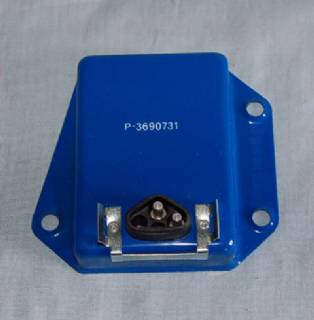What you have..............
On the end of the resistor which is looped, you have power coming TO that loop connection from the bulkhead and from the ignition with the key in "run."
This is "ignition run" or as Chrysler calls it IGN1
NOW
This ignition run voltage GOES DEAD by design when you twist the key to "start." This means there is NO ignition voltage and the car WILL NOT FIRE.
How did Chrysler get these cars to start?
There is a SECOND voltage supply which is ONLY live with the key in the "start" position. This is a completely separate switch contact inside the ignition switch, and (some years) is brown. This comes through the bulkhead and to the terminal of the resistor going to COIL POSITIVE
That wire IS THE ONLY source of ignition power during cranking and must be connected
One big big problem is that there "were changes" in 72--73--74. The only factory manuals I have access to is 72 and 74, so I can't document exactly what went on, and 72 was a changeover year---evidently breakerless ignition was an option "about then." Below is posted the 72 diagram, closest I can find
What I'm talking about is not functional wiring, but the actual wire colors, splices, and physical layout.
In the drawing at the bottom.............
THE RESISTOR is upside down and backwards from yours, IE the looped end is on the right of the resistor in this diagram
This diagram related to yours seems to be.............
Your left side "loop" is
dark blue .........ignition run
green? yellow.....to ECU won't be needed (In the diagram, that is the wire going to the very top terminal of the ECU connector, J2E-18DBL-Y. Colors don't seem to match yours, which is why an ohmeter is important
Your top right.........brown..........is top left terminal of the resistor in the diagram. This went to the coil + and to the brown resistor (starting) bypass circuit
Your bottom right . red/ green (bottom left terminal of the resistorin the diagram) went to the ECU and will not be needed.
So basically you need to take all the wires off the ballast, remove the two you don't need and connect the others together.
YOUR ORIGINAL COIL+ now becomes the power wire which feeds to the new distributor.
View attachment 72electronic.jpg

















